Explanation of the Cell Membrane Part 2: The Lipid Bilayer
In today's lecture, we will provide a more accurate explanation of the cell membrane's structure, which we couldn't cover completely in the previous explanation. You can find more detailed information here.
Let's start with a quick review of the previous lecture.
Sure, please go ahead!
In the previous lecture, I explained that the main component of the cell membrane is phospholipids.
Furthermore, I also explained that phospholipids form a lipid bilayer structure, which is a characteristic of the cell membrane, combining hydrophilicity and hydrophobicity.
Is everything clear up to this point?
Y-yes, it is!
I have some doubts, but let's continue.
Today's lecture will mainly focus on explaining phospholipids.
Understanding the structure of phospholipids is essential to grasp the structure of the cell membrane correctly.
Even I, during my student days, took some time to fully understand it. So listen carefully.
I will do my best! Thank you!
Structure of Phospholipids
As I've mentioned multiple times, phospholipids possess both hydrophilic and hydrophobic properties.
Yes.
Substances with this characteristic are referred to as amphiphilic substances.
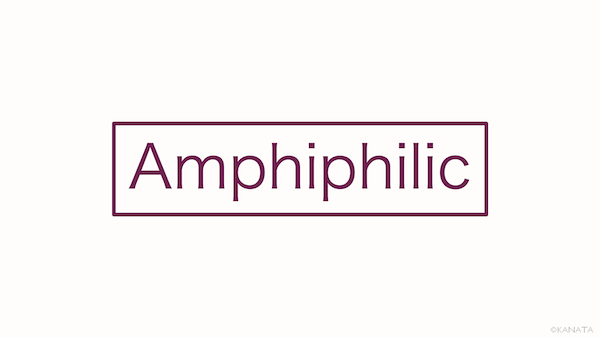
Amphiphilic...
To give a familiar example, it's like detergent, isn't it?
In that case, I can imagine it a bit.
Alright. Next, please take a look at this diagram.
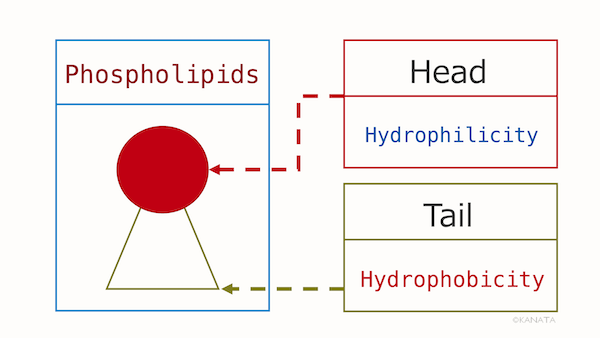
What is this diagram depicting?
This is a diagram that shows the upper portion of a phospholipid.
It has a structure where the upper part is hydrophilic and the lower part is hydrophobic.
Do you understand it so far?
Yes, I understand.
Now, let's continue with the explanation.
The previous explanation didn't accurately describe the structure of the lipid bilayer.
Huh?
This is how the lipid bilayer looks in the diagram!
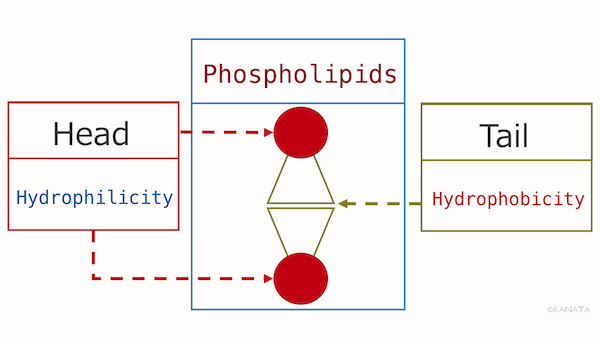
Wow! It's amazing!
So, the lower part (hydrophobic) of the phospholipid mentioned in the previous explanation is facing each other, right?
Exactly. When I was a student, it was difficult for me to imagine this facing each other arrangement. I struggled until I could fully understand it.
But, teacher, I still haven't fully grasped it.
In that case, take a look at this diagram.
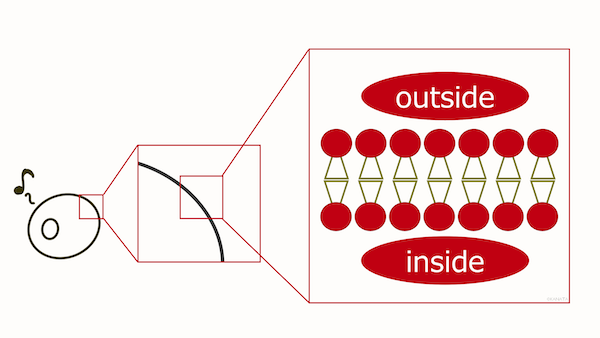
This is an enlarged diagram of the cell membrane. Does this make it easier to visualize?
It's easier to understand! I think I can visualize it better than before!
Great. The key point is that both the outer and inner sides are facing hydrophilic regions.
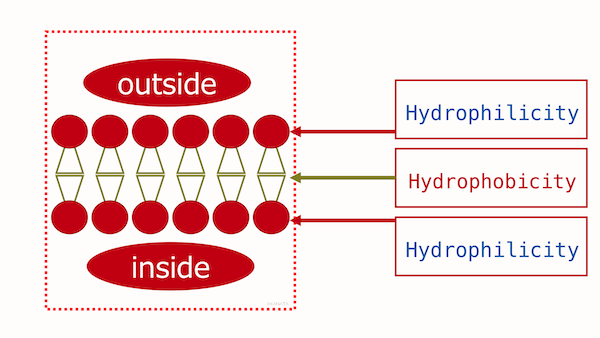
The structure of the lipid bilayer is simple.
Summary
Do you remember the explanation from the previous lecture about how the hydrophilic region faces outward, allowing us to detect changes in the extracellular fluid (internal environment)?
Y-Yes!
However, as we explained earlier, both the outer and inner sides are hydrophilic.
In other words, it serves as a sensor not only for the extracellular fluid (internal environment) but also for both the extracellular and intracellular fluids.
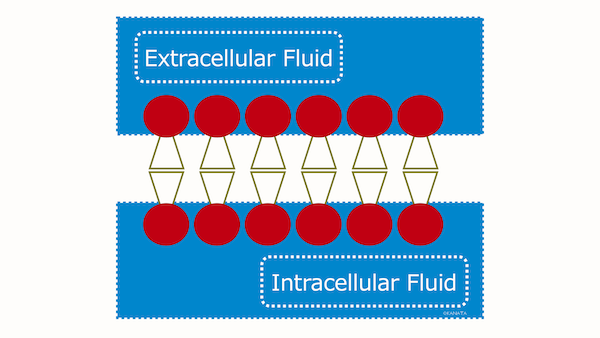
Phospholipids are truly amazing, aren't they?
Indeed they are.
Now, let's summarize today's lecture.
Yes!
Phospholipids are responsible for forming the lipid bilayer of the cell membrane.
These phospholipids are considered amphiphilic substances, as they possess both hydrophilic and hydrophobic properties.
In the cell membrane, the hydrophilic portions of phospholipids face both the inner and outer sides of the cell.
Thanks to this structure, cells can accurately perceive the state of water inside and outside the cell.
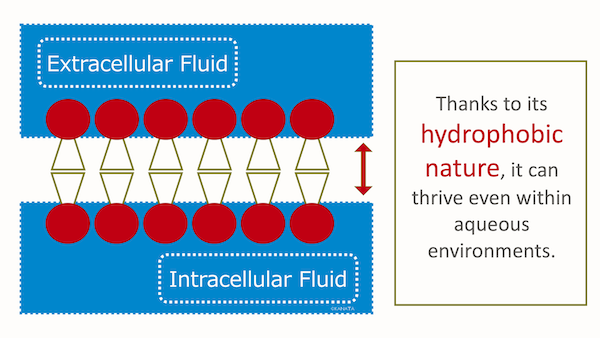
And thanks to the hydrophobic nature on the inside, cells can maintain their structure and survive within the extracellular fluid.
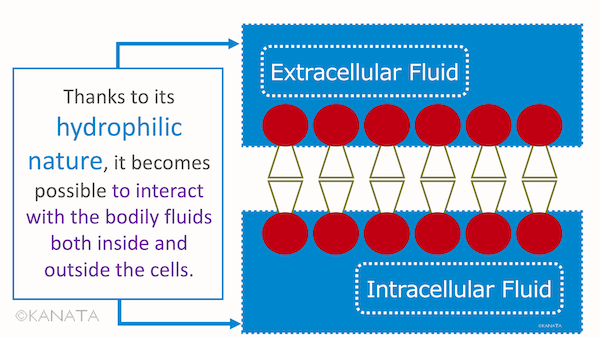
That concludes the explanation of the lipid bilayer and phospholipids.
Today's lecture contained a lot of information, so make sure to review and organize it properly.
I will review it when I get home.
Good. That will be all for today's lecture.
Thank you very much!
I was able to understand the greatness of phospholipids!
I'm glad to hear that.
By the way, there were more images than usual today.
Indeed. I had many illustrations I had drawn before.
It would have been a waste not to use them, so I decided to incorporate them all.
It was very helpful and easy to understand.
I'm glad to hear that.
Finally, let me give you a problem to solve.
Amphipathic substance
Phospholipids
Hydrophilic